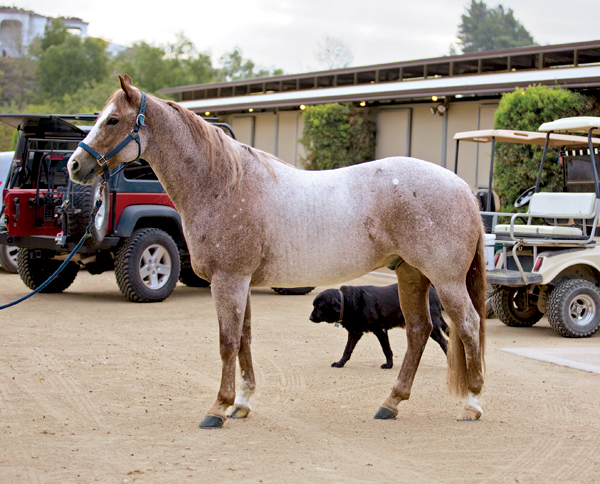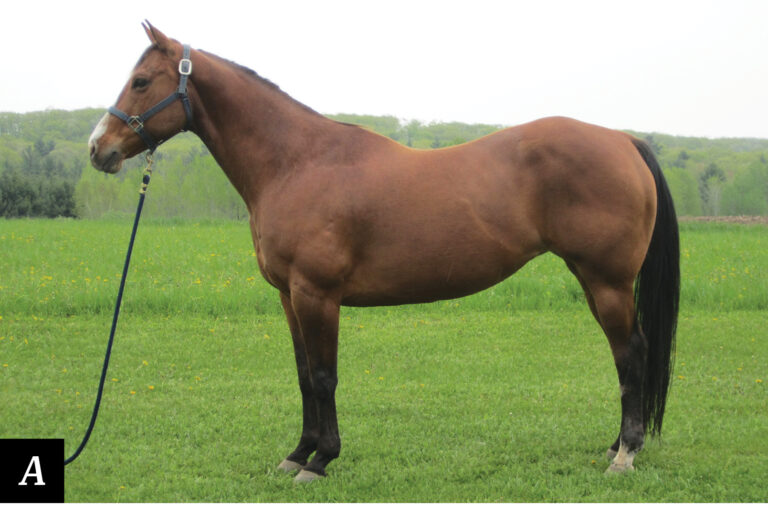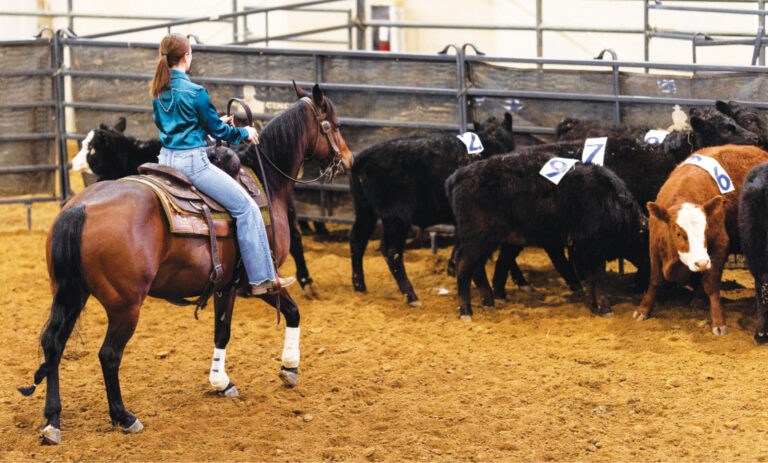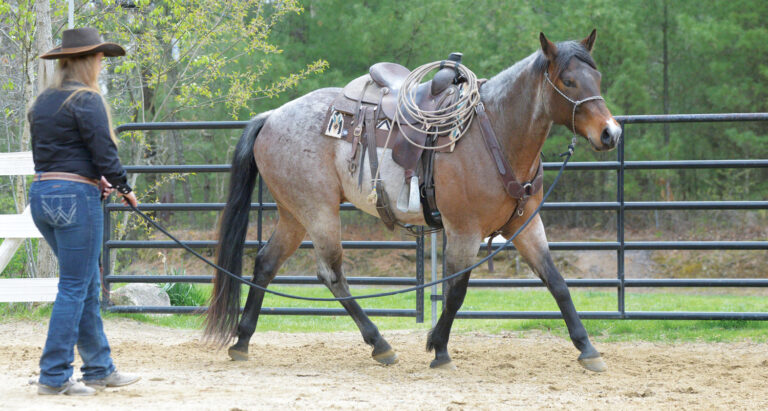I shake my head every time I scroll through horse-for-sale ads online and in magazines. The photos that accompany many ads make it nearly impossible to gauge a horse’s quality. The backgrounds are messy. The lighting is horrible. The horse is standing at an unflattering angle (and often is dirty).

How can anyone expect to sell a horse like that?
Just as in the show pen, first impressions matter. And with an ad (online or otherwise), that first impression is usually a photo. So make it count. No, don’t just make it count; make it sell.
How? It’s easy. And won’t cost you anything but time, some inexpensive grooming products, and a little elbow grease.
Set Up to Look Bad
Look at the two photos, above and below, and you’ll see what I mean. The photo above is an example of how to “un-sell” a horse. The background is distracting: a dog, cars, a golf cart, barn lights—all of that “stuff” takes away from the very thing the seller is trying to showcase.
The heavy clouds make the light gray and dull, which in turn makes the horse look dull. (Picture a supermodel on a magazine cover: The light will always be on the bright side, to make the model look her best; more about light in a minute.) Distractions and light aside, this horse is literally set up to look bad!
The photographer stood toward the front of the gelding, and the horse’s left hind leg is set too far behind his body. Plus, the right hind is set too far forward. The result? The bad angle, coupled with the way his hind legs are set, make the gelding’s back look much longer and lower than it is.
The gelding’s left-front leg is set too far forward, which (coupled with the photographer’s forward angle) makes his shoulder look straighter than it is. His head and neck are too high, adding to the impression that his shoulder is straight. The high-headed stance also makes his neck look short and thick.
The halter hangs so low on this gelding’s nose that his head looks long and unattractive. Plus, his eyes and ears look as distracted as the background! Couple all that with a raggedy mane (don’t get me started on the shavings in his tail!), and I’d have to ask any seller who posts such a photo, “Are you really serious about selling this horse?”
The Right Way
Yup, that’s the same horse in the photo above. It probably took us all of 15 minutes to convert him from drab to fab, grooming-wise. First, we clipped his muzzle, ears, bridle path, and the long hairs on his legs. Then we brushed him (we’d have bathed him, if necessary, which would’ve added a bit of time), and sprayed him lightly with a coat-shine product. We combed his mane and tail, then applied hoof-shine products to his feet.

Finally—and this is key—we found a clean halter with untarnished silver and made sure it was properly fitted to his head. If you don’t have a silver halter, and can’t borrow one for the shoot, a clean, well-fitted leather, nylon, or rope halter will work. “Well-fitted” means the buckle is up by the horse’s ear, the throatlatch fits snug under his jowl, and the noseband fits snug approximately halfway between his eye and nostril.
Once the gelding was spiffed up, we waited for good light. This occurs during the “golden hours”: early morning or evening, when the sun is low in the sky and bathes everything in a golden light. If you were to shoot in the middle of the day, the directly overhead sunlight would be too “hot;” rather than golden, it’s harsh and casts hard shadows.
When the light was right, we led the roan gelding to an area with a background that was simple and attractive. It was nice that we had a spot with flowers, but you don’t need blooming flowers for an attractive background. Just make sure whatever background you choose is clean and clutter-free, so it doesn’t distract from your horse. Watch for such background problems as trees or fence posts appearing to grow from parts of the horse’s body.
We set our model gelding up with his hind legs squarely under his body. Look at the difference that makes in his back’s appearance—it no longer looks as long and low as it does in the first photo. I like to set the left-front leg slightly ahead of the right-front leg, so it doesn’t look from the side as though a horse only has one front leg. Both legs are still straight beneath him, which shows off the slope of his shoulder.
Finally, the photographer stood opposite the gelding’s barrel, so the horse was centered in the lens. We waved a rag to get his ears up (a bucket of feed works great, too), and snapped the shot when his head was at a natural level, which shows off the length and shape of his neck.
Which of the photos would prompt you to respond to an ad? I thought so. Sometimes a picture truly is worth a thousand words.
A multiple AQHA world champion, Avila has also won three NRCHA Snaffle Bit Futurities, the NRHA Futurity, and two World’s Greatest Horseman titles. He received the AQHA Professional Horseman of the Year honor. His Avila Training Stables, Inc., is in Temecula, California. Learn more at bobavila.net.




